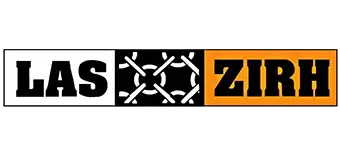Tire Wear Reduction Strategies: Leveraging Tire Protection Chains for Heavy-Duty Equipment
Tire wear represents the gradual deterioration of a tire’s tread and structural integrity due to regular use. In heavy-duty equipment, such as mining trucks and construction vehicles, tires endure substantial stress from rugged terrain, heavy loads, and varying weather conditions. This constant strain accelerates the wear process, leading to frequent replacements and increased maintenance costs. Effective tire wear reduction strategies are essential for optimizing equipment performance and extending tire life.
The Role of Tire Protection Chains
Tire protection chains are robust accessories designed to shield tires from harsh operating environments. These chains are constructed from high-strength materials that provide a protective barrier against abrasions, punctures, and other forms of damage. By incorporating tire protection chains into heavy-duty equipment, operators can achieve significant tire wear reduction and improve overall equipment reliability.
How Tire Protection Chains Work
Tire protection chains function by enveloping the tire in a network of interlocking metal links. This chain mesh acts as a buffer between the tire and the abrasive surfaces it encounters. As the tire rotates, the chains absorb and distribute the impact forces, thereby reducing the stress transferred to the tire itself. This protective mechanism mitigates damage and contributes to tire wear reduction by minimizing direct contact with harsh elements.

Benefits of Tire Protection Chains for Tire Wear Reduction
Incorporating tire protection chains offers several benefits that directly contribute to tire wear reduction:
- Enhanced Durability: Tire protection chains significantly enhance tire durability by preventing direct contact with sharp objects and abrasive surfaces. This added layer of protection reduces the likelihood of punctures and cuts, which are common causes of premature tire wear.
- Improved Traction: The chains provide additional grip on slippery or uneven surfaces, improving traction and stability. Better traction reduces the chances of tire slippage, which can lead to uneven wear patterns and faster degradation.
- Extended Tire Life: By reducing the impact of external forces on the tire, protection chains help maintain the tire’s structural integrity for a longer period. This results in extended tire life and fewer replacements, contributing to overall cost savings.
- Reduced Maintenance Costs: The enhanced protection provided by tire chains reduces the frequency of tire repairs and replacements. Consequently, operators experience lower maintenance costs and improved operational efficiency.
Types of Tire Protection Chains
Different types of tire protection chains cater to various operational needs and conditions. Understanding these types helps in selecting the most suitable chains for specific equipment and environments:
- Crossbar Chains: Featuring a crisscross pattern of metal bars, these chains offer robust protection against sharp objects and abrasive surfaces. They are suitable for extreme conditions where maximum durability is required.
- Studded Chains: Equipped with metal studs, these chains provide enhanced traction on icy or slippery surfaces. They are ideal for operations in cold climates where maintaining grip is crucial for tire wear reduction.
- Heavy-Duty Chains: Designed for the most demanding environments, heavy-duty chains are constructed from high-strength materials to withstand severe impacts and abrasive conditions. They offer superior protection and contribute significantly to tire wear reduction.
Installing Tire Protection Chains
Proper installation of tire protection chains is essential to ensure their effectiveness in reducing tire wear. The following steps outline the general installation process:
- Select the Right Chain Size: Choose chains that match the tire size and specifications of the equipment. Using incorrectly sized chains can affect performance and tire protection.
- Position the Chains: Place the chains around the tire, ensuring they are evenly distributed. Proper alignment prevents uneven wear and maximizes the protective benefits.
- Secure the Chains: Fasten the chains securely using the provided tensioning mechanisms. Ensure there is no slack, as loose chains can cause damage to the tire and compromise wear reduction.
- Check Regularly: Inspect the chains periodically to ensure they remain in good condition and properly secured. Replace any damaged or worn chains to maintain effective protection.

Maintenance and Care for Tire Protection Chains
Regular maintenance and care are crucial for the longevity and effectiveness of tire protection chains:
- Clean Regularly: Remove debris and dirt from the chains to prevent corrosion and maintain optimal performance. Cleaning also ensures that the chains continue to provide effective tire wear reduction.
- Inspect for Damage: Regularly check for any signs of wear or damage to the chains. Address any issues promptly to prevent further deterioration and ensure continued protection.
- Store Properly: When not in use, store the chains in a dry, sheltered area to prevent rust and damage. Proper storage extends the lifespan of the chains and contributes to tire wear reduction.
Case Studies: Tire Protection Chains in Action
Several real-world examples illustrate the effectiveness of tire protection chains in achieving tire wear reduction:
- Mining Operations: In a mining operation with rugged terrain and sharp rocks, the use of crossbar chains significantly reduced tire wear. The chains protected the tires from punctures and abrasions, leading to extended tire life and reduced operational costs.
- Construction Sites: On a construction site with uneven surfaces and heavy loads, studded chains improved traction and stability. This enhancement minimized tire slippage and uneven wear, contributing to overall tire wear reduction.
- Winter Operations: In cold climates with icy conditions, studded tire protection chains provide superior grip and stability. This traction improvement reduced the risk of tire damage and wear, ensuring reliable performance in extreme weather.
Conclusion
Effective tire wear reduction is vital for maintaining the performance and cost-efficiency of heavy-duty equipment. Tire protection chains play a crucial role in achieving this goal by providing enhanced protection, improved traction, and extended tire life. By understanding the benefits, types, installation, and maintenance of tire protection chains, operators can significantly reduce tire wear and optimize their equipment’s operational efficiency. As technology continues to advance, the future of tire protection chains promises even greater innovations, further contributing to tire wear reduction and overall equipment performance.












